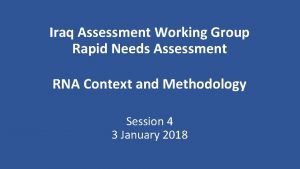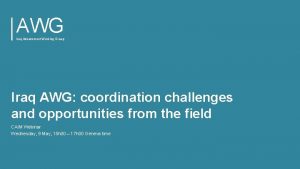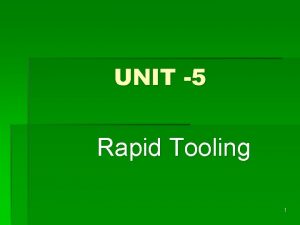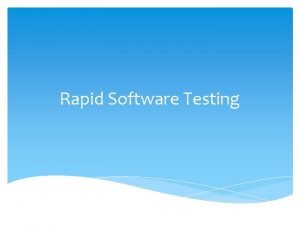Iraq Assessment Working Group Rapid Needs Assessment Simulation










- Slides: 10

Iraq Assessment Working Group Rapid Needs Assessment Simulation Exercise Session 5 3 January 2017

Purpose The mini-simulation exercise allows you to: 1. Familiarise yourself with the tool 2. Practice choosing different key informants and CGDs 3. Practice the debriefing, synthesizing 3 forms into 1 • Identify and trouble-shoot problems in the debrief process • Discuss mitigation tactics for debrief complications

Instructions 1. Everyone will receive a scenario and a role in Arabic. 2. There will be three groups: • • • 3. FSC Group WASH Group Child Protection Group In each group, we will have the following roles: • • Assessment Managers/Team Leaders Enumerators / Data Collectors Key Informants Community representatives You will have 5 minutes to read the materials and assign roles and responsibilities.

1. Familiarization with scenario Following a meeting with the Humanitarian Coordinator and the Humanitarian Country Team, OCHA and UNICEF share with you the following update on the situation on the ground.

2. Form assessment teams • Are there assessment managers or assessment team leaders in the room? • Has anyone interviewed communities before? • Has anyone selected/interviewed Key Informants before?

3. Assess Each group has community members (CGDs), Key Informants (KIs), enumerators (E) and assessment managers/team leaders (AM). Form assessment teams, set up the interviews as needed and at the end of the data collection stage revert with minimum 3 completed forms (min. 1 KI, 2 CGDs) • Each key informant may only be interviewed once. • Write down the identity of the KI and CGD members you interview on your form.

4. Debrief and Submit Form Following the data collection, proceed for debrief and revert with one consolidated master form ready for submission to the Kobo. Server. During the debrief (AM and E), discuss the answers you have on the three forms and decide which would you use on a final RNA form and why. AM marks the FINAL ANSWER on the blank form s/he received. Note: Participant who had KI and CGD roles can join the debrief as silent observers.

Time management Use the time wisely. The security situation allows staff to be on the ground only: • 10 minutes for data collection • 10 minutes for debrief and form consolidation • 30 minutes group report back and plenary discussions

Group reporting and plenary • Were the answer different from each other on the three forms? • What answers did groups pick? • Why were they chosen? • What things do we need to be weary of when we do the debrief? • What do we need to consider when we select an answer? • What can we do if we are not sure of an answer? • Did you have time to do Direct Observation or collect additional data?

The End
 Primary needs and secondary needs
Primary needs and secondary needs Primary needs and secondary needs
Primary needs and secondary needs Alpha press murray
Alpha press murray Strategic gender needs and practical gender needs
Strategic gender needs and practical gender needs Types of needs analysis in esp
Types of needs analysis in esp Working hard vs working smart
Working hard vs working smart Hot working vs cold working
Hot working vs cold working Hot working and cold working difference
Hot working and cold working difference Machining operations
Machining operations Proses pengerjaan panas
Proses pengerjaan panas Is iraq a landlocked country
Is iraq a landlocked country



















